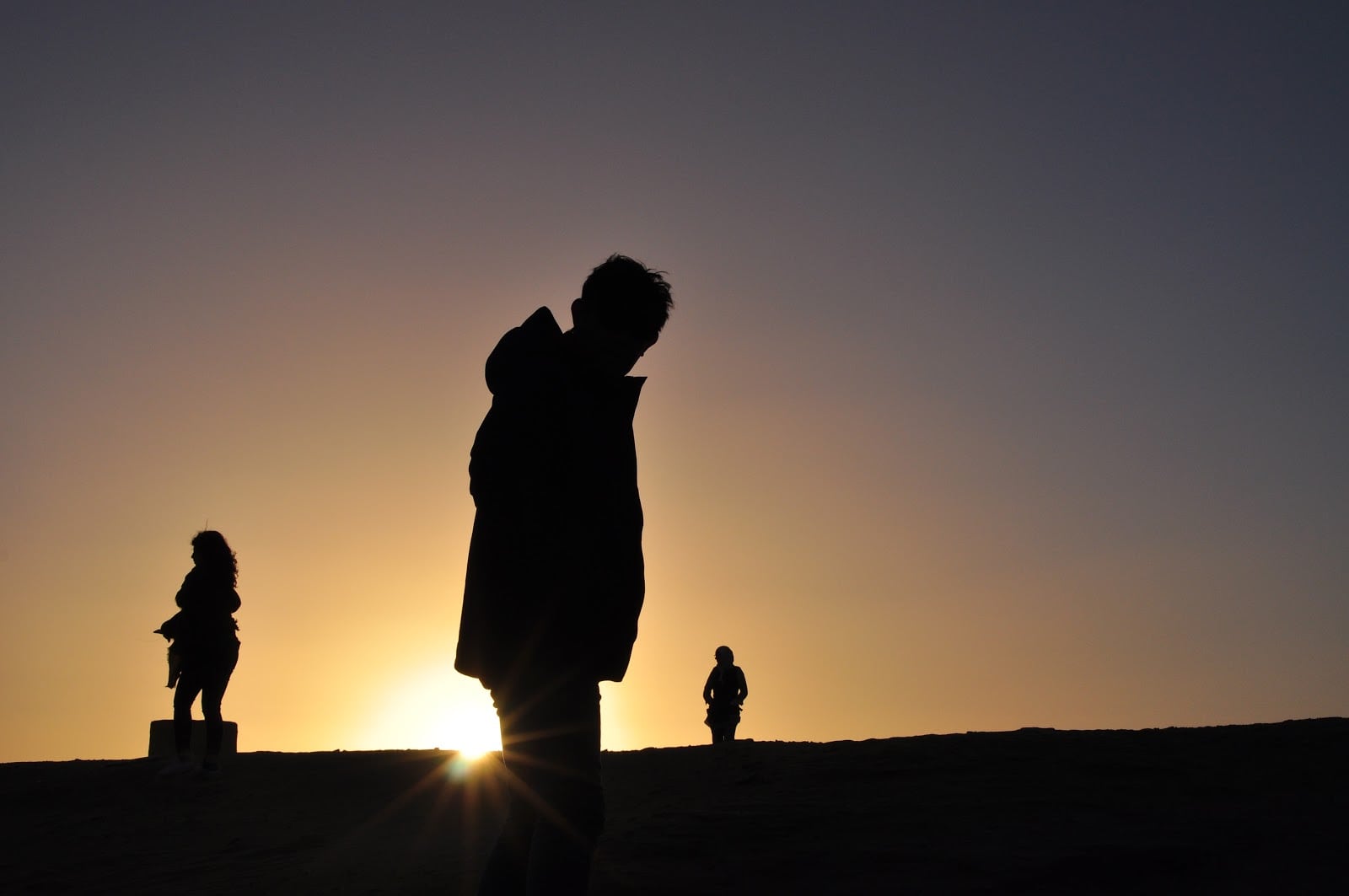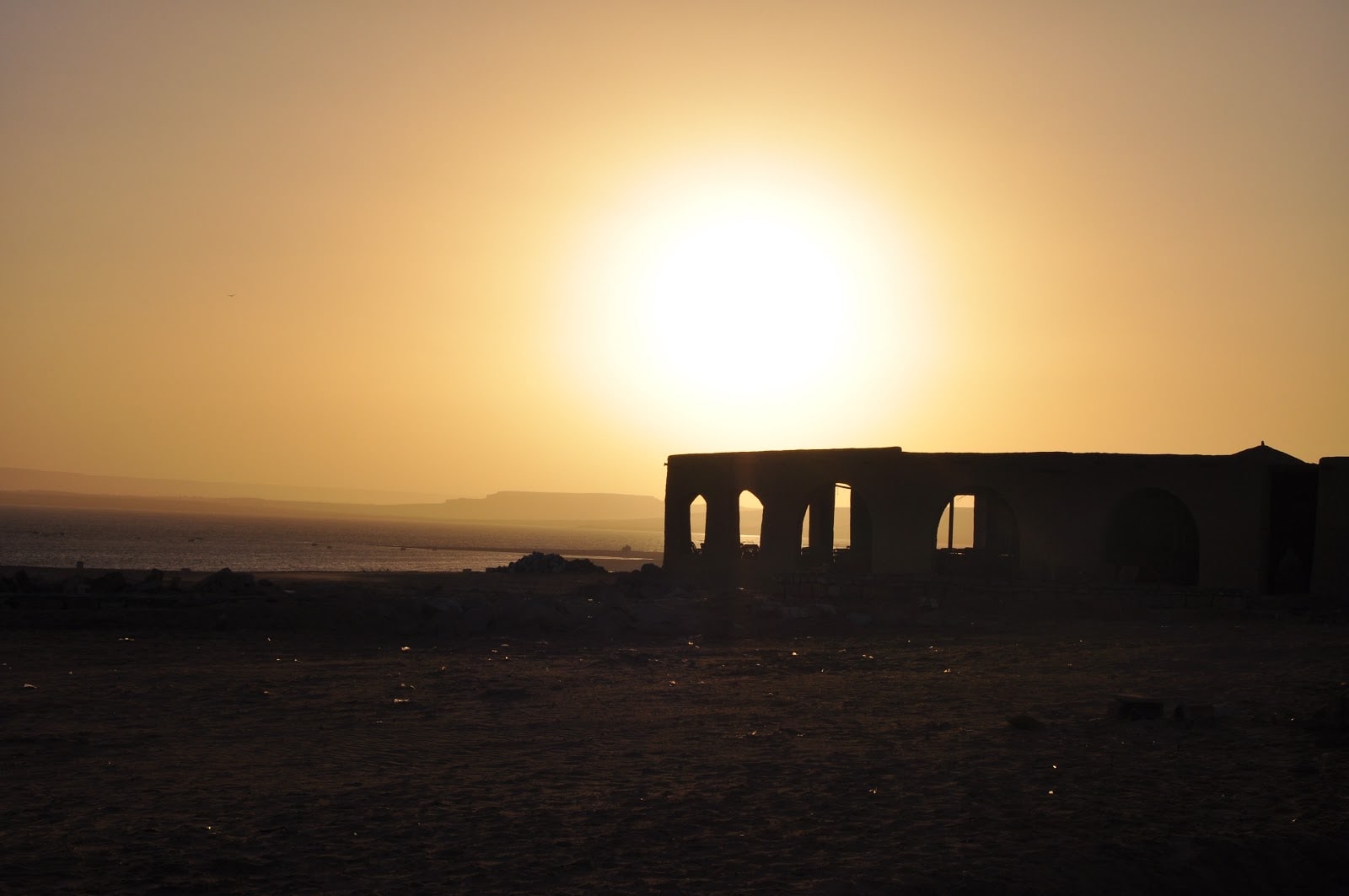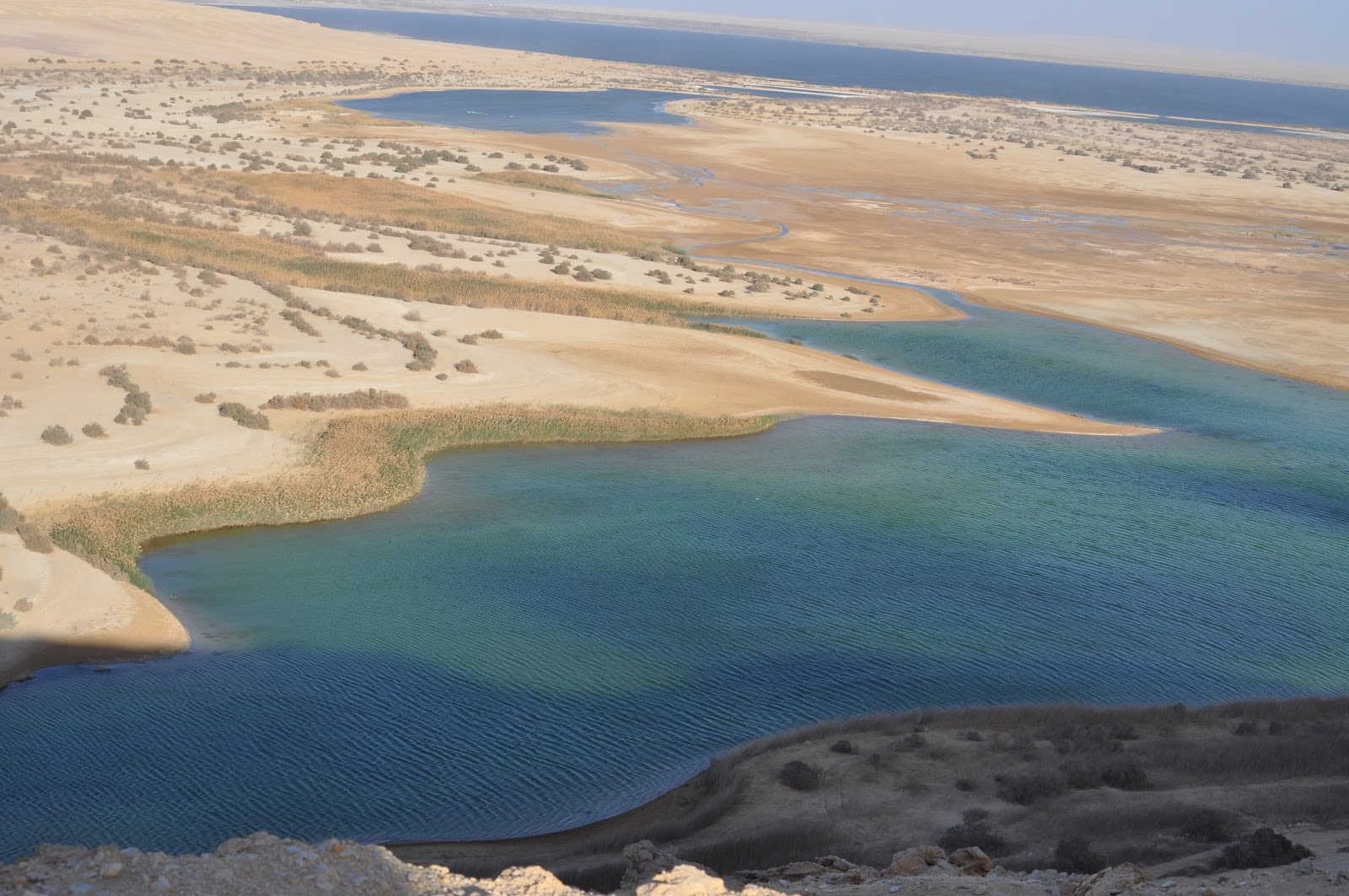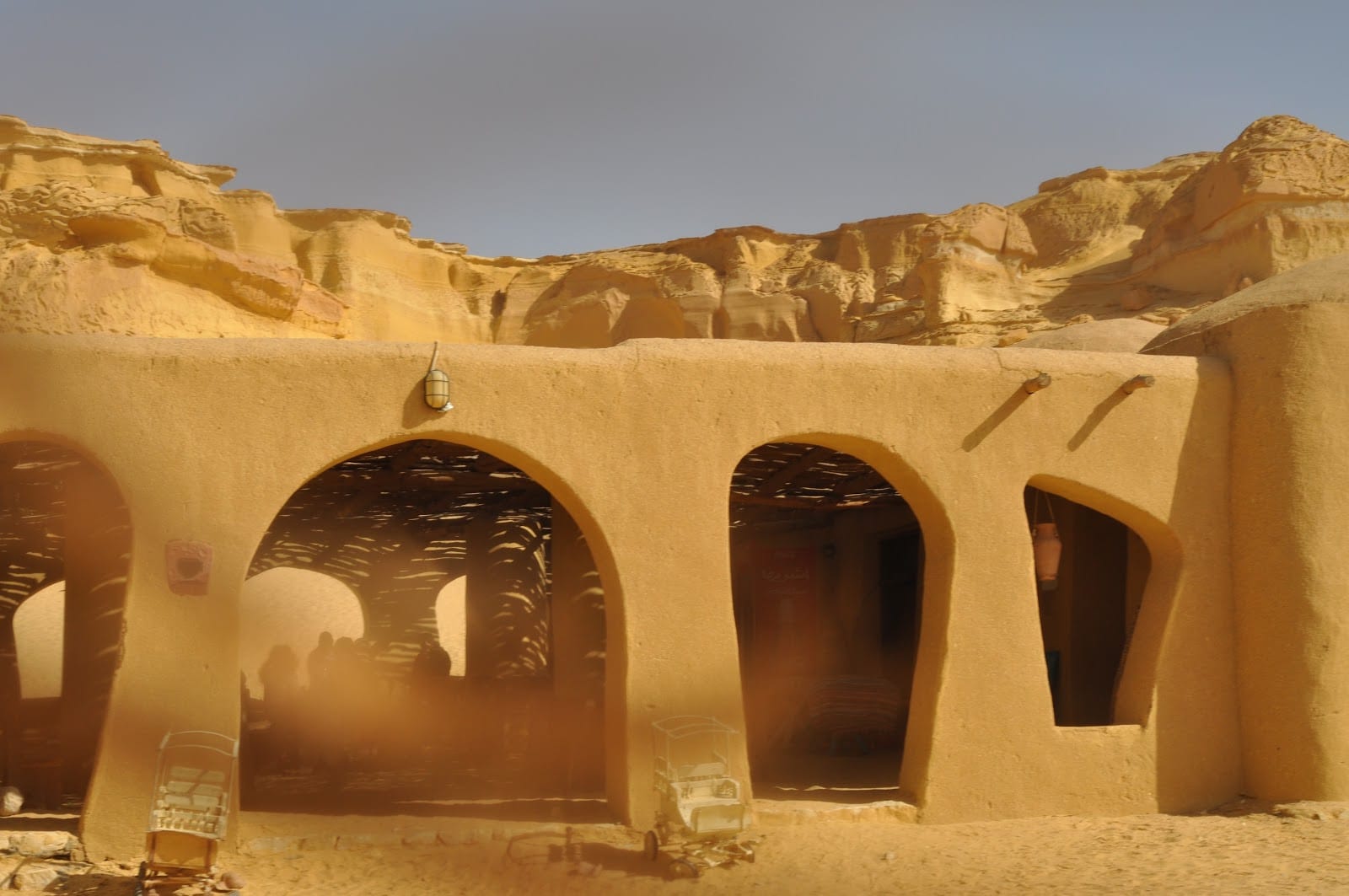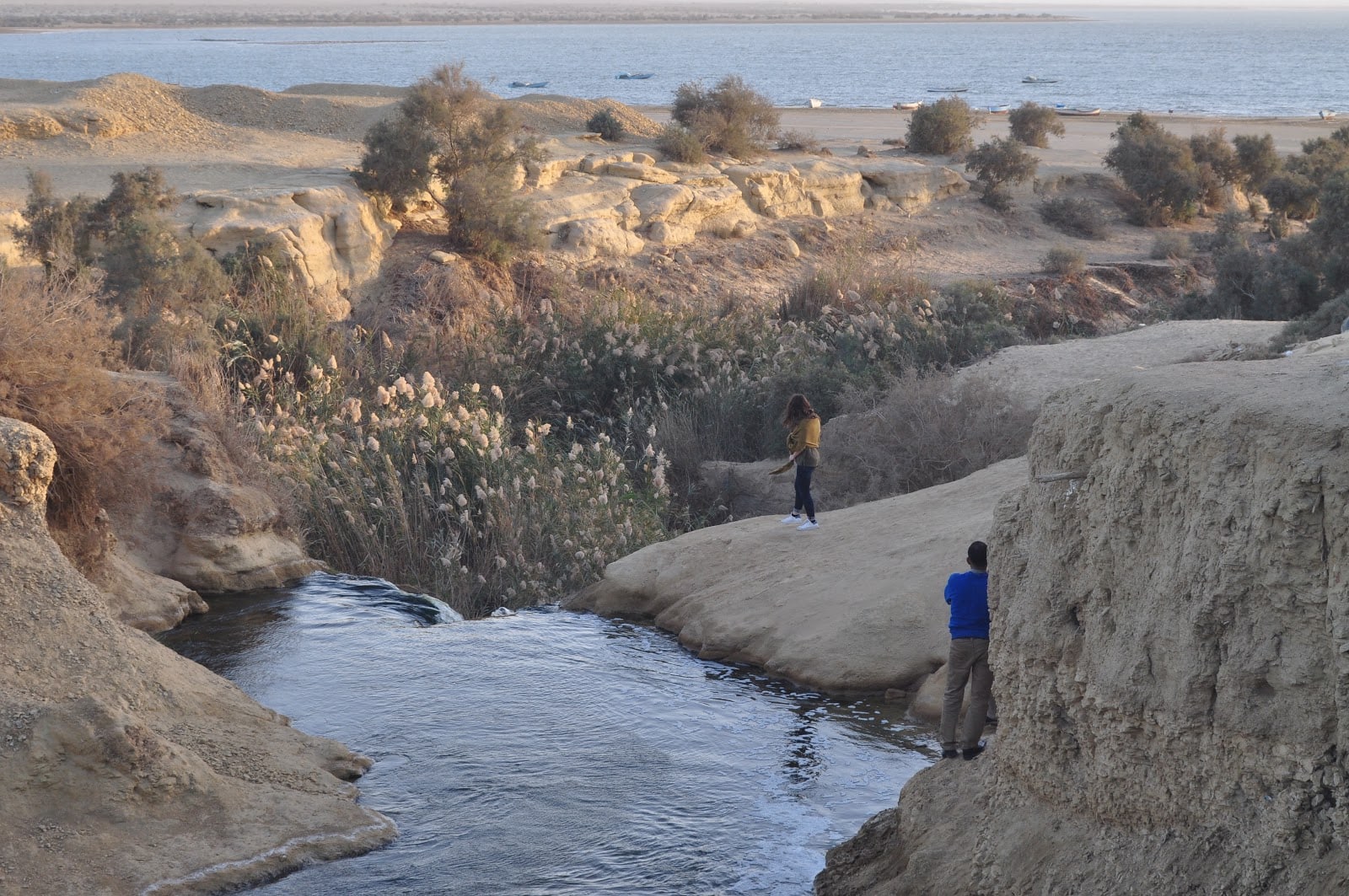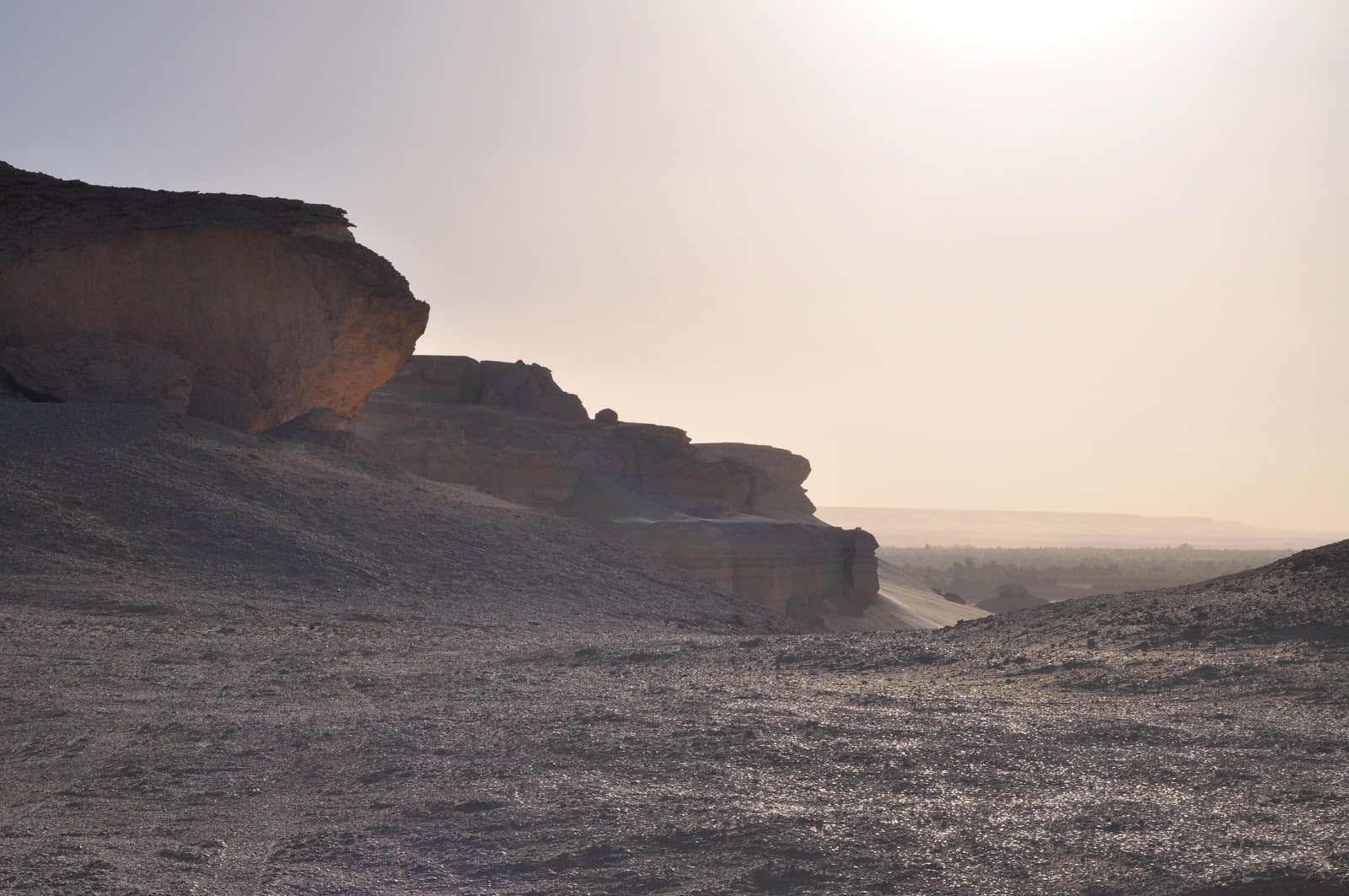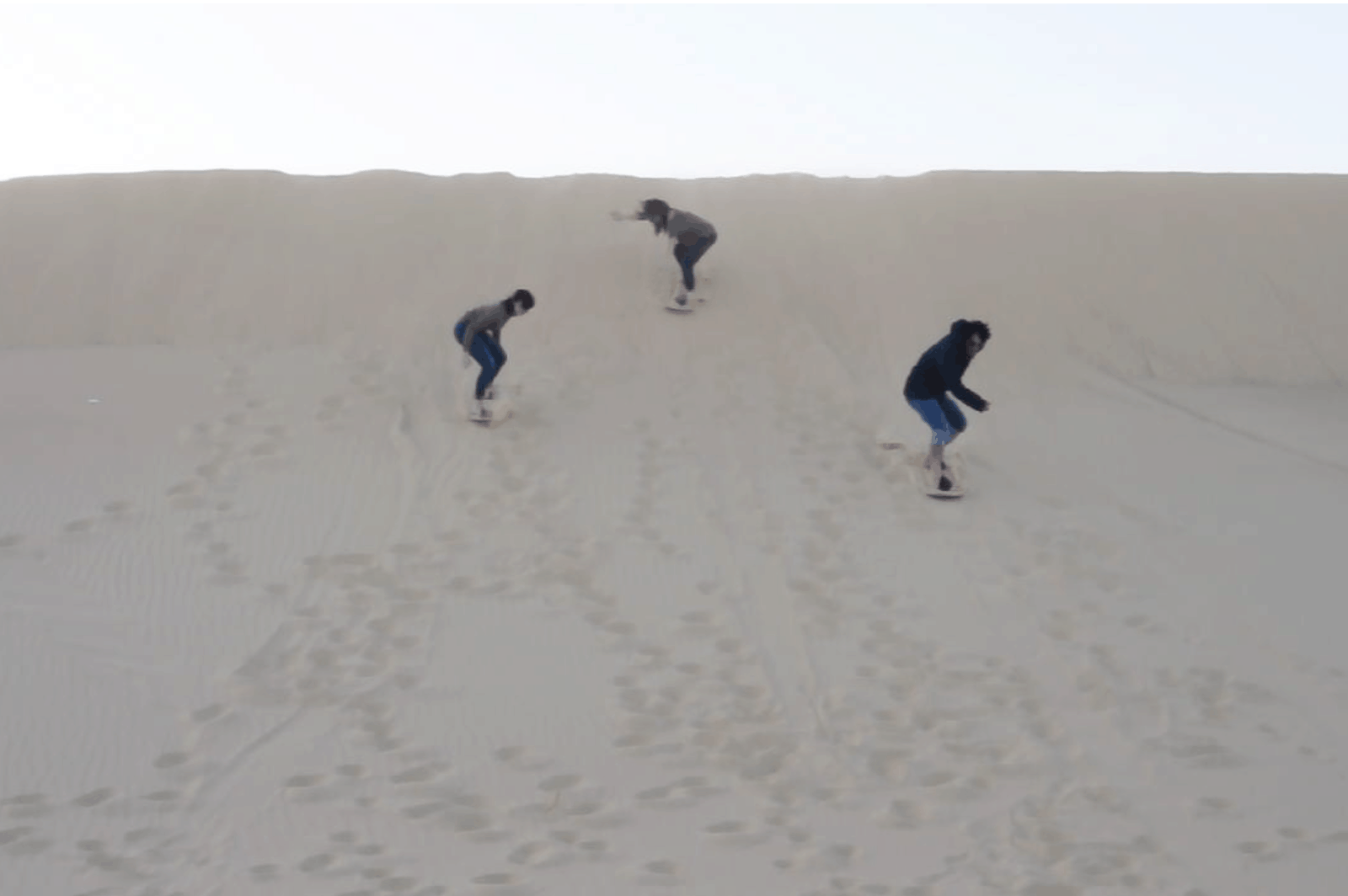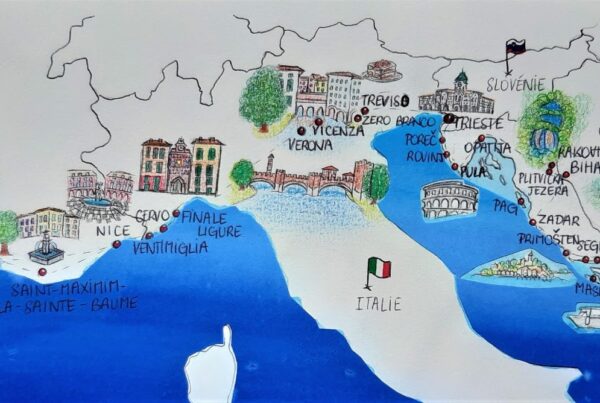By Morgane Brière
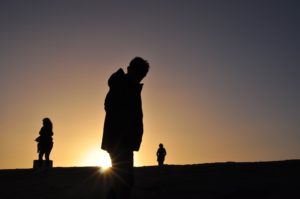
“Un ancien poème égyptien dit “ Nil Nil Nil – Fleuve impétueux et tumultueux, tu es comme notre reine – la source de la vie!”
Author’s note: This article is heavily influenced by too many viewings of Chabat’s masterpiece “Asterix et Obelix: Mission Cleopatre”. If you haven’t seen this movie at least twice – watch it. Come back. And finish reading.
Egypt is a country of cats – and I hate cats. But it also a place of ancient history, iconic landscapes and all of my favorite foods.
Once you step off the airplane platform, everything comes at you at once. The noise, the smell, the pollution – there’s no escaping it – that is, until you face four hours, stranded in the desert. More about that later.
We started off our trip with a visit of the pyramids of Giza – one of the seven wonders of the world. While the pyramids themselves are beyond impressive, it was their integration in the city itself that I found fascinating. Giza has become one of Cairo’s central neighbourhoods – facilitating both tourism and the city’s continual expansion. If you chose to turn your head away from the cement buildings and grey sky and just look left, you are granted a view of a never-ending desert, blue skies and the famed triad of pyramids. Seeing all this from atop the back of a camel was particularly exciting – the extra height allowed me to take in the scene as a whole. I rode Pepsi – a fairly tall and agitated camel with an unfortunate penchant for putting me off my already fragile balance.
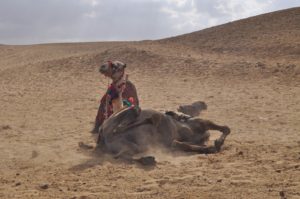
Pepsi stretching after a long walk
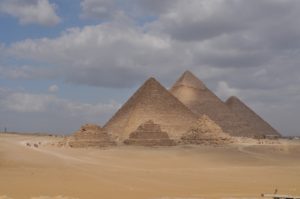
Giza Pyramid : the famed triad
Pepsi brought me towards a picture-perfect panorama of the Giza complex, then on to the Queen pyramids and finally, our last stop of the day, the Sphinx. Needless to say the day was long – but the weather granted to us by the mild December days of our visit was just right. We were able to appreciate the desert and the city itself without the crushing heat of an Egyptian summer. The mild temperatures were not alone in making this excursion hassle-free. We had the advantage of family friends who spoke the language and handled the dealings and bargainings, making our trip as a whole fairly smooth.
With the pyramids seen and my sister asleep in the back of a rented Jeep, we headed to our friends home on the outskirts of the city. The house was big, beautiful and equipped with full-time staff – it was also forty minutes away from Cairo in a subdivision that looked like it belonged in Palo Alto and not the “Alexandria Desert Road”. Our friends share their time between this new suburbia crowned “6th October” – after the memory of the Yom Kippur War – and their family apartment in the exclusive Cairo neighbourhood of Zamalek. This vast, 300 sq-meter apartment was within walking distance of one of the city’s rare green spaces, and its trendiest restaurants and designer shops. Just down the street was a small restaurant that specializes in local dishes and long line-ups. The joint was spread out across a single floor and the guests were seated along a single wooden table… Zooba seemed to reunite all kinds of people – from groups of twelve sharing a weekly meal to those who came single, busy and looking for a quick bite. After a 30 minute wait, we ate alongside a group of friends and a mother-daughter duo. The food was great – with classic Egyptian dishes such as Kosheri (a mix of pasta, lentils and hot sauce, topped with fried onions) and my personal favourite, the Hawawshi (a spiced meat patty served in Badali bread – essentially a hamburger elevated to a whole new level).
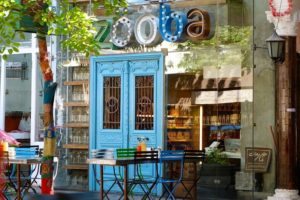
Photo: zooba,Cairo street eats//Sundial Press
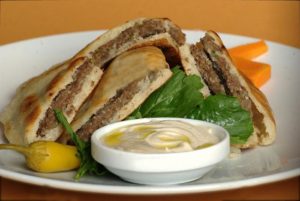
Photo: alali.com hawashi//Sundial Press
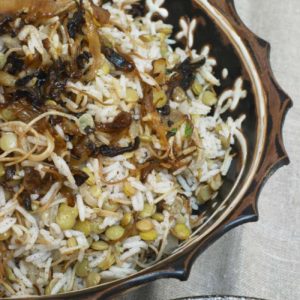
Photo:Ottolenghi, Kosheri/Sundial
On the topic of food, Cairo is a crazy place where you can get anything delivered to you at any hour. All you have to do is pick up the phone, order and wait. My favorite example is not mine but my sister’s. Late at night, she felt like a snack – her friend then promptly offered a Cinnabon. With a quick call and a choice between classic or caramel, the deed was done and my sister had her midnight sweet in under thirty minutes. It turns out Zooba also delivers – something we were all very happy to hear.
The next day we split off from our friends and visited Cairo’s biggest market, Khan El Khalili, one of the most characteristic Souks in the Middle East. In its center is a mosque and a square. That day, we basked in the December sun, but you could see that folded down in the corner were large metal umbrellas ready to protect the passersby from the harsh sun of the warmer months. Unfortunately, you could also see a clear absence of tourists – in the square, but more generally throughout the city. Looking around that square at the empty cafes and desperate waiters – it was clear that Egyptian tourism has taken quite a beating.
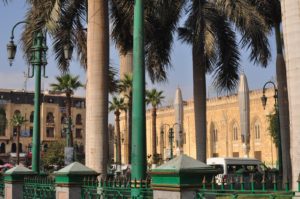
Khan El Khalili
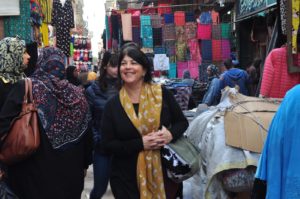
Inside the Souk
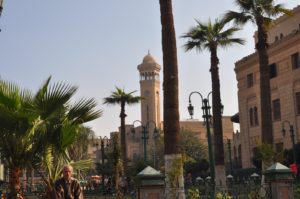
Khan El Khalili square and mosque
My strongest encounter with this was a few days later. It was a cloudy day in Cairo, we had just come back from a crazy desert adventure and everyone was tired. Our friends decided we would visit a Pharaonic Village which she described as being a set of museums dedicated to the replica of the Tomb of Tutankhamen and the illustration of ancient Egyptian History. When we got there, the neglect and decrepitude was unmistakable – the Village had little revenue and yet the place remained running. It was over-staffed, equipped with empty boats and cafes – it seemed to represent a shocking microcosm of the rest of the country. The economic and political crises that had occurred following the events on Tahrir square continued to hinder Egypt’s success. Tourism was clearly failing. After that day, I saw evidence of this all around the city – the extra eagerness of the merchants and cafe workers, the dozen of men on the street ready to take your photo for money…In what was once one of the world’s most popular tourist destinations, tourists were now the exception.
While Cairo is different than my streets of Toronto, I felt okay walking around and visiting, I never really felt the fear that many had warned us about. This could have been heavily influenced by the presence of my parents and even more by our friends. They however were very careful not to let my sister or me out of their sight. The first day, we were both happy to be sheltered, but it soon became tiresome and the reality of why this protection was being enforced sunk in a little more each day. It bothered me that I knew I had to accept the well-meant bossing around. This sheltering made itself too clear during our visits in the Souk. As I made my way around the different shops, I was constantly told to wait till someone would accompany me – better yet if it could be my father. It was strange to feel safe in the moment, but to know that protection was both well-intentioned and perhaps quite valuable.
A few days into the trip, Cairo itself became too much for me. We needed to escape the insanity of the city with its constant choir of honks, heckling and traffic-lingo. I was linguistically lost on more than one level – drivers had their own language in Cairo. The number, intensity and speed of each honk communicated a different message – by the end of the week I could tell if the guy next to us meant “move out of the way” or “careful – there’s another car coming your way”. It was all quite impressive, actually. Even more so though was our city-escape to the Oasis of El Fayoum (an archaeological site where ancient whale skeletons had been discovered, indicating the presence of a lost ocean). Three hours south of Cairo we visited waterfalls, saw Egypt’s “Magic Lake” change colours at noon and at the end of day we saw, surfed and boarded sand dunes. It was a day of adventures. A few hours later, as we drove back towards Cairo, a movie-scene disaster presented itself to us. Our tire blew out and the spare was already being used to fix another tire that had blown out that morning. In one day, the car had tried on no less than three tires – as I sat in the back of our rented Jeep I thought about how exactly I was going to tell this story. With the tour company’s tires being useless, the driver called around asking for someone to help us out. He had four tourists stuck in the desert and the sun was setting too quickly for comfort. By the time someone, arrived it had been dark for about an hour – it was really cold in the desert at night. The first man to help out had brought a spare for us, but against all odds or perhaps it fit perfectly with the rest of this story – his own spare was flat. The total count: three flat tires in a single day. After a few key moments of panic and desperation, a second man arrived. We switched the tire and we were on our way back to the city. This incident could be blamed on pure bad luck or you could take it the way our friends did and blame it on the disorganization and carelessness that ran their beloved country. With three flat tires and the four stranded tourists it seemed clear to our friends that the chaos was bigger than that of our day.
- El Fayoum
- Magic Lake
- El Fayoum
- Waterfalls of El Fayoum
- View from the drive in the sand dunes
- Sandboarding
After the intensity of our desert getaway, we girls decided it was time for a trip to the Hammams of Cairo. We visited a quiet little spa in the space above a café – it was a simple place, relaxing and welcoming and felt just right after the sandy day we had just experienced. However, when visiting Cairo beware the Hammam experience is not what you get in North America or in Reims – it’s a lot more than a steam. It’s an intense scrubbing down and it sometimes rather hurts. But once it’s over your skin feels renewed and ready for another few days of polluted air and sand storms. I had always heard friends of mine reminisce about sandstorms and the days they got off for them from school – I truly never expected to live through one myself. But one morning I woke up to shut windows and grey skies – I asked our friends what this was all about. They replied that a storm was going on outside and that the windows needed to remain closed for the day. In my head, a storm either meant rain or snow and I knew neither of those were plausible weather conditions at the time. When I asked for more detail I was told that in fact it was sand that was disturbing the city that day – the desert was following us, it really did not want us to leave and it would burst a few more tires to make its point.
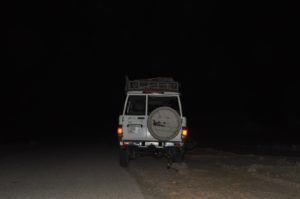
Photo: Desert 8pm; stranded tourists with flat tire: Morgane Briere//Sundial press
On our last day, once the sand had cleared up, my parents and I decided we could not leave without seeing Old Cairo. This lead to confusion and even a few harsh words. It was Friday evening – around 5 p.m. – this is also the time of day when all travel websites advise tourists to steer clear from attractions. Old Cairo is also the alternative name for Coptic Cairo – a place where less than a week before an attack had occurred and many had lost their lives. With this knowledge and all the hidden fear I had within me, I brought this forward to my parents and posed the simple question of whether they were truly bringing me to this Coptic area of Cairo. Their answer was more worrisome than anything else – they did not know. I was far from reassured. After some Google searching and a call to our friends, we came to the conclusion that the while the names were far too confusing – Historic Cairo was in fact very different than Coptic Cairo and we were in fact going to the right one. With hesitation I ceded to our general conclusion. When we arrived to the gates of historic Cairo relief passed over me – it was beautiful. We experienced the city at the perfect time of day as the sun was setting, the lights were dim and the prayers could be heard from the street speakers. People were out in the cafes, having tea or smoking a shisha with friends and all felt incredibly comfortable. It was by far my favourite part of the city – with old castles and wood detailing on every façade. The mosques were lit up with green and white lights and the prayers more musical than ever. It was a great last day and a perfect way to end off a trip that had started out with much hesitation.
This trip illustrated perfectly Otis’ carpe diem claims of “ Vous savez, moi je ne crois pas qu’il y ait de bonne ou de mauvaise situation. Moi, si je devais résumer ma vie aujourd’hui avec vous, je dirais que c’est d’abord des rencontres. Des gens qui m’ont tendu la main, peut-être à un moment où je ne pouvais pas, où j’étais seul chez moi. Et c’est assez curieux de se dire que les hasards, les rencontres forgent une destinée.”
I had arrived in Cairo semi-reluctantly and I left not only feeling comfortable but also as if I had gained a small part of understanding. I found that once I let go of the fears, expectations and the driver’s hand – I learnt to pet the cats, all the lyrics to Claude Francois’ “Alexandrie Alexandra” and a few everyday expressions.
Photos: Morgane Briere//The Sundial Press
Other posts that may interest you:
- The Trouble with ‘Ecocide’
- Carbon dioxide removal – hit or miss?
- Local Victories for Turkish Opposition — A Sign of Hope?
- Are France and Japan a Mismatch Made in Heaven?
- A Reflection on Dark Tourism
Discover more from The Sundial Press
Subscribe to get the latest posts sent to your email.


